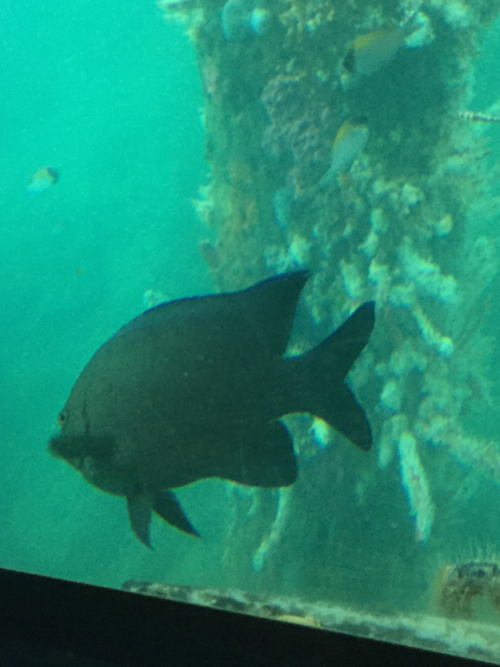#1744-1747 - Ghoti
#1744 - Meuschenia hippocrepis - Horseshoe Leatherjacket

A filefish, a little over 50cm long, found in temperate seas off Western and Southern Australia. The Monacanthidae, AKA foolfish, leatherjackets or shingles are found in all warmer oceans, and are closely related to the triggerfish, pufferfish and trunkfish. They have rough, sandpapery skin, which is how they earned their common name, and have diverse diets.
Photographed from the Busselton Underwater Observatory, from which you can see a wonderful range of species, and things like an octopus strolling up to the surface, grabbing a seagull by the feet, and dragging it under the water to drown. In front of a classful of schoolkids.
#1745 - Austrolabrus maculatus - Blackspotted Wrasse

AKA Blackspotted Parrotfish.
A small Labrid, only 12cm long, and the only member of its particular genus. Found off southern Australia down to about 40m.
The Labridae are diverse, and have complicated jaw morphology and thick lips that earned them the German and Dutch names Lippfische and lipvissen. Some species are capable of tool use, using rocks to smash open sea urchins. Many are protogynous hermaphrodites, with the largest fish in a group changing to male, although in some species they can change back to female if a bigger male is around. There is also some evidence that they can stay female, if its advantageous.
This particular individual was as fascinated by humans as we were by her - only coming to the window if there was a human nearby to look at.
#1746 - Anoplocapros lenticularis - Whitebarred Boxfish

AKA Flame Boxfish, High-backed Boxfish, Humpback Boxfish, Humpty Dumpty, and Smooth Boxfish
A deepwater boxfish native to southern Australia. Adults are about 1ft long, and markings vary - from bright orange to reddish, or reddish-brown. The bright reddish-orange males have an irregular pattern of white bands, while females have dark lines beside the white markings. The almost spherical juveniles are brownish-orange with dark spots that eventually become bands.
They have been kept in private aquariums before, but it’s not recommended because they can’t tolerate even mildly tropical temperatures, and they may poison other fish they’re kept with.
#1747 - Parma mccullochi - McCulloch’s Scalyfin


A Pomacentrid native to the SW of Australia. Juveniles are a similar shape (parma is Latin for little shield), but have brilliant blue upper parts and a bright orange belly.
Around Perth, at least, they’re strictly herbivorous, and quite fussy about which algae they will eat - to the point that the species growing within their territory will be quite different to those growing outside it. As such it’s an ecosystem engineer, maintain patchs of high species diversity in the middle of kelp beds.
They pair up in breeding season, and the male will stand gaurd over, and aerate the eggs, once they’ve been glued to a surface.